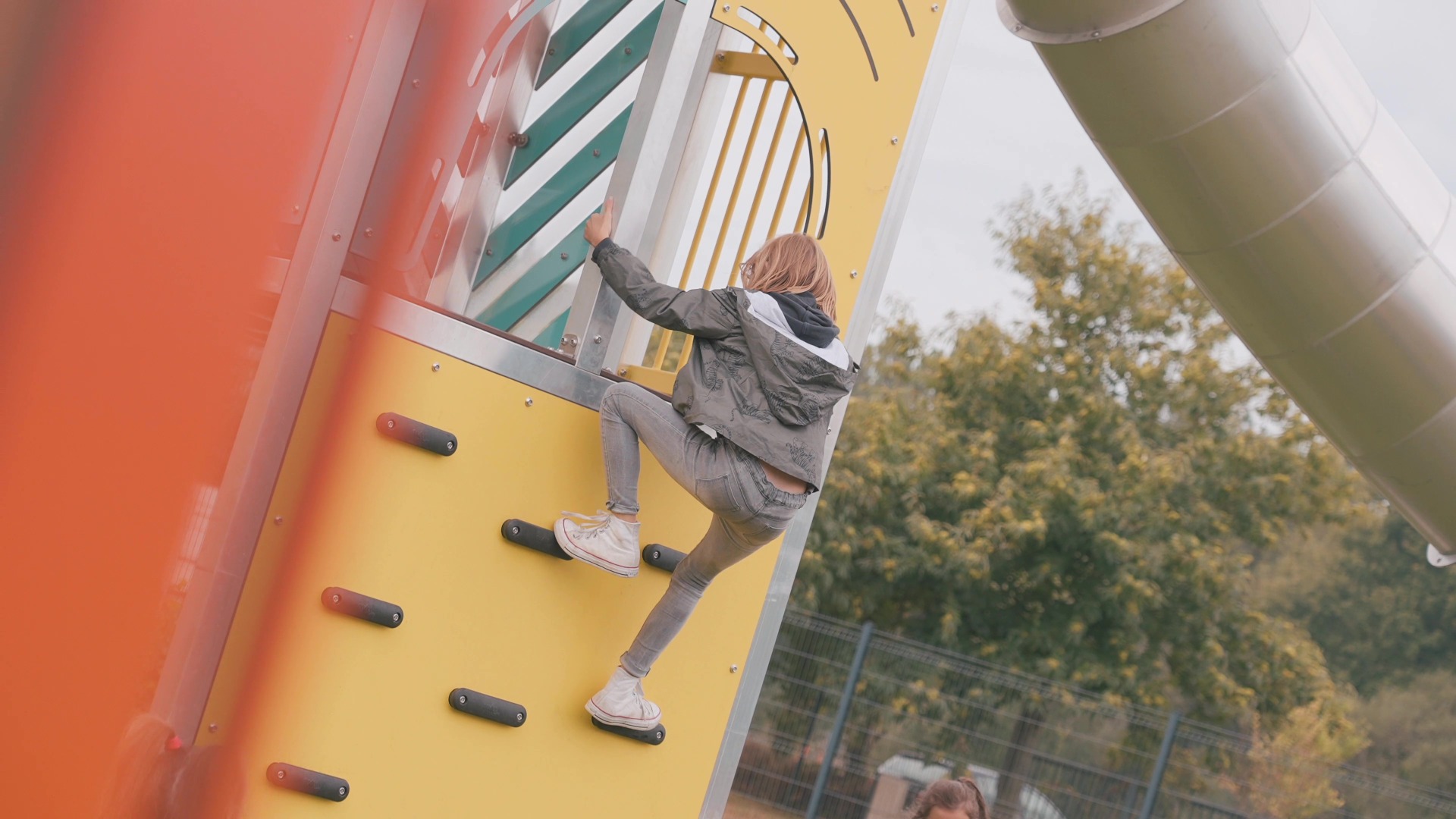
Playground and balance: what equipment?
29/03/2023

Balance is essential for the physical and mental development of children. It is a complex skill that involves the vestibular system of the inner ear and the body schema. Psychomotor activities are therefore important to strengthen this skill in children. Playgrounds are an excellent way to stimulate the sensations of rocking, spinning, translating and rotating, which promote child development.
By providing sensory stimuli, playground structures and equipment can help children better understand their bodies by managing their balance and movement. Here is a selection of playground structures that support children's balance:
Swinging play structures
Swings are a classic playground feature and a must-have for outdoor playgrounds.
From a very young age, parents reassure children by rocking them, thus creating a feeling of relaxation. As they grow up, children not only return to this experience, which allows them to naturally synchronise their breathing with the back-and-forth movement, thus helping to reduce anxiety. But they also explore more dynamic rocking as they seek to push their limits.
In addition to providing a sense of pleasure, the swinging movement provides a sense of motion. Visual disorientation encourages the brain to find visual stability and spatial orientation.

To meet the specific needs of children, adapted seats are designed for each age group:
✔️ Baby seat for 1-3 year olds, as on PO 741-02
✔️ Standard seat for 4-14 year olds
✔️Siège "Bird's nest" for swinging with several people and/or lying down for a different feeling (PO 752-14),
✔️Siège wrap-around for children with disabilities from 5 years of age (PO 759-12).
Sliding and spinning games
Sliding and spinning activities are also beneficial for the development of children's balance, which changes as they grow. They build confidence in their motor skills and encourage them to progress.
Slides, for example, are very useful in helping children adjust their bodies and maintain balance on the way down. With speed, the body is slightly propelled out of the slide requiring responsiveness and good coordination.

Carousels are also a fun way to stimulate children's balance. They offer a feeling of vertigo that forces the vestibular system to process information to keep their balance. Whether they are pushing the merry-go-round or just riding on it, the feeling of dizziness is guaranteed. It is a real challenge not to fall, to avoid obstacles, to move with stability...

Games for climbing and coordination
The principle is simple, by putting oneself in a position of instability the body will react to maintain balance and therefore muscle tone.
The course structures are particularly adapted to aquilibrium games. They are composed of different platforms linked by beams, monkey bridges, rope or step bridges, crawling tunnels... Children can walk, run or jump, challenging the principle of gravity like real ninjas!
The multi-activity structures with their various play activities are of course also conducive to the development of body and visual stability. The interest in balance lies in the children's ability to manage height and the fear of heights.
Moving around on the nets and accesses allows them to manage both balance in movement and height.

Climbing walls are also an excellent way to stimulate children's balance and coordination, while allowing them to have fun. They require a great sense of balance and agility to reach the top. From the inclined plane for toddlers to the vertical walls for the more adventurous, there are several levels of difficulty so that all children can climb regardless of their age.

Playgrounds are great tools for children to learn balance. They consolidate their psychomotor skills in a safe and fun environment. Thanks to good balance, children are better able to manage the risks of falls and shocks, to find their way in space and to better understand their body schema.

